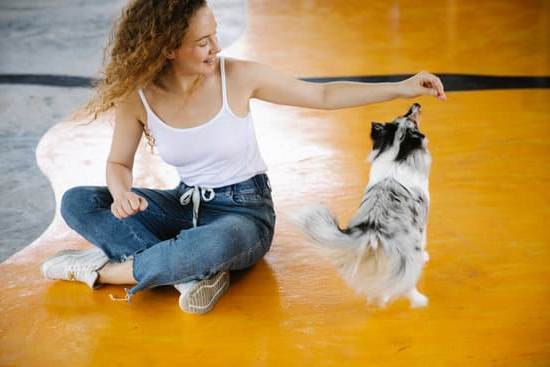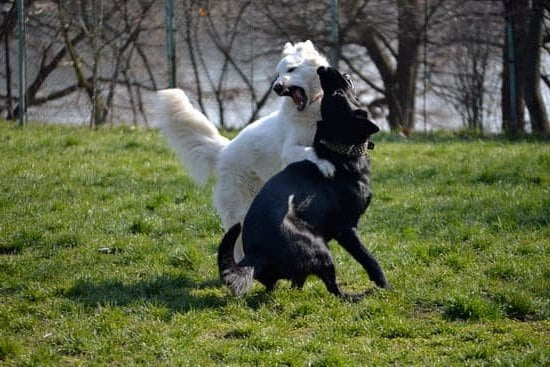Training your dog to park it can be a fun and rewarding experience for both you and your furry friend. This concept goes beyond the typical obedience commands, as it involves teaching your dog to stay in a designated area until released. In this article, we will explore how to effectively train your dog to park it, ensuring a well-behaved and disciplined pet.
When it comes to training your dog to park it, choosing the right method tailored to your dog’s personality and energy level is crucial. Different dogs respond differently to various training techniques, so it’s essential to find what works best for your four-legged companion. Whether your dog is high-energy or more laid-back, there is a method that will suit their unique needs and help them master the park it command.
Creating a specific area for your dog to park it is an important aspect of the training process. This designated space should be comfortable for your dog and free from distractions that could hinder their focus. By establishing a consistent park it zone, you can help reinforce the command and make it easier for your pup to understand where they are supposed to stay. With patience, dedication, and positive reinforcement techniques, you can successfully teach your dog to park it.
Choosing the Right Training Method for Your Dog’s Personality and Energy Level
When it comes to training your dog to park it, one of the most important factors to consider is choosing the right training method that aligns with your dog’s personality and energy level. Dogs, just like humans, have unique characteristics and behaviors that can influence how they learn and respond to training. Understanding your dog’s individual traits can help tailor your approach to effectively teach them the park it command.
Assessing Your Dog’s Personality
Before starting the park it training process, take some time to observe and understand your dog’s personality. Is your dog more outgoing and eager to please, or are they more independent and stubborn?
Knowing these characteristics can guide you in selecting a training method that will resonate with your furry friend. For example, a more independent dog may benefit from clicker training or shaping exercises, while a social and energetic dog may respond well to interactive play as part of their training routine.
Matching Training Methods to Energy Levels
Energy levels play a significant role in how your dog learns and retains commands. High-energy dogs may require more physical activities and stimulation during training sessions to keep their focus, while low-energy dogs may prefer shorter and more relaxed training sessions. Consider incorporating activities such as agility courses or scent work into your training regimen for high-energy dogs, while low-energy dogs may thrive with mental stimulation exercises like puzzle toys or obedience drills.
Regardless of your dog’s personality or energy level, the key is patience, consistency, and positive reinforcement in teaching them how to park it successfully. By adapting your training approach to match your dog’s individual traits, you can create a harmonious learning environment that strengthens the bond between you and your canine companion.
Creating a Designated Park It Area for Your Dog
To train your dog to park it in a designated area, start by selecting the spot and making it enticing for your furry friend. You can place their favorite toys, treats, or blankets in that area to make it appealing. When introducing this new space to your dog, use positive reinforcement techniques such as treats and praise when they go to the designated park it area. Repeat this process consistently to help them associate that spot with positive experiences.
Consistency is key when creating a designated park it area for your dog. Make sure to always use the same command when directing them to that spot and avoid confusing signals. Additionally, remember to keep the park it area clean and comfortable for your pet to ensure they enjoy spending time there. With patience and practice, your dog will learn to love their designated park it spot as a safe and cozy place of their own.
| Key Points | Description |
|---|---|
| Consistency | Using the same command and signals every time. |
| Positive Reinforcement | Rewarding good behavior with treats and praise. |
| Comfort | Maintaining a clean and cozy environment in the park it area. |
Teaching the Command Park It With Positive Reinforcement Techniques
Understanding Positive Reinforcement
Positive reinforcement is a powerful tool when it comes to training your dog. This training method involves rewarding your dog for displaying the desired behavior, in this case, parking it in the designated area. The reward can be treats, praise, toys, or any other positive reinforcement that motivates your furry friend. By consistently rewarding your dog for following the park it command, you are reinforcing that behavior and increasing the likelihood of them repeating it in the future.
Introducing the Park It Command
To begin teaching your dog the park it command using positive reinforcement techniques, start by bringing them to the designated area where you want them to park it. Use a consistent verbal cue such as “park it” while guiding them into position with a treat or a gentle hand gesture.
As soon as your dog follows the command and parks it in the designated spot, reward them immediately with praise and treats. Repeat this process several times to help your dog associate the command with the desired behavior.
Consistency Is Key
Consistency is crucial when using positive reinforcement techniques to teach your dog to park it. Make sure to always reward your furry companion when they successfully follow the command and park it in the designated area. Consistent practice will help reinforce good behavior and build a strong association between the cue and desired action.
Remember to keep training sessions short and fun to prevent your dog from becoming bored or frustrated. With patience, consistency, and positive reinforcement, you can effectively train your dog to park it on command.
Practicing With Distractions and Increasing the Duration of the Park It Command
When it comes to training your dog to park it, one of the most essential steps is practicing with distractions and gradually increasing the duration of the command. Dogs, just like humans, can get easily distracted by their surroundings or other stimuli. By teaching your dog to park it in different environments with various distractions, you are helping them learn to focus and obey the command regardless of the situation.
Start by practicing the park it command in a quiet and familiar environment where your dog is comfortable. Once they have mastered the command in this setting, gradually introduce distractions such as other people, animals, noises, or toys. Keep the training sessions short initially to prevent overwhelming your dog. As they become more proficient at ignoring distractions and parking it on command, you can increase the difficulty level by adding more challenging distractions.
In addition to practicing with distractions, it’s important to also work on increasing the duration of the park it command. Begin by asking your dog to park it for a couple of seconds before rewarding them. Gradually extend the duration by a few seconds each time until they are able to hold the position for an extended period.
Be patient and consistent during this process, offering plenty of praise and treats for successful outcomes. With perseverance and positive reinforcement, your furry friend will soon master how to train your dog to park it effectively in any situation.
Troubleshooting Common Issues During the Training Process
When training your dog to park it, you may encounter some common issues that can hinder their progress. It’s important to address these challenges effectively to ensure successful training. Here are some common problems you may face and how to troubleshoot them:
- Lack of Focus: If your dog seems easily distracted during training sessions, try to find a quiet and familiar environment to practice the park it command. Limiting distractions will help your dog stay focused on the task at hand.
- Difficulty Understanding the Command: Some dogs may struggle to grasp the concept of “park it” initially. Break down the training into smaller steps and use verbal praise or treats when they exhibit the desired behavior. Consistency is key in reinforcing the command.
- Resistance to Stay in Place: If your dog tends to wander off or move around instead of staying parked, start by rewarding them for small increments of time spent in the designated area. Gradually increase the duration before offering a reward, teaching them that staying put results in positive reinforcement.
By identifying these common issues and implementing specific strategies to address them, you can help your dog overcome obstacles during their park it training. Remember to be patient and consistent in your approach, as every dog learns at their own pace. With perseverance and positive reinforcement, you’ll soon see improvement in your furry friend’s ability to park it on command.
Tips for Consistency and Reinforcement to Ensure Long-Term Success
Consistency and reinforcement are key components when it comes to training your dog to park it. These aspects will help solidify the command in your dog’s mind and ensure long-term success in their behavior. One of the most important things to remember is to be consistent with your cues and expectations every time you ask your dog to “park it.” This helps your dog understand what is expected of them and reinforces the desired behavior.
To maintain consistency, it’s crucial to use the same command phrasing and hand signals each time you ask your dog to park it. Consistency also applies to the designated park it area you have set up for your pet.
By always bringing them back to that spot, they will begin associating that area with the command. Additionally, make sure everyone in the household is on the same page when training your dog, so there is no confusion for your furry friend.
Reinforcement plays a significant role in ensuring long-term success in training your dog to park it. Positive reinforcement techniques such as treats, praise, or play can motivate your dog to continue practicing this behavior. Remember to reward them immediately after they successfully park it, so they understand what they did right.
Consistent reinforcement will help strengthen the bond between you and your pet while making training sessions enjoyable for both of you. By staying consistent with commands and providing positive reinforcement, you can set your dog up for success in mastering their park it skills.
Celebrating Milestones and Progress in Your Dog’s Park It Training Journey
As you embark on the journey of training your dog to park it, it is important to recognize and celebrate the milestones and progress that both you and your furry companion achieve. By acknowledging these achievements, you not only motivate your dog to continue learning but also strengthen the bond between the two of you.
To celebrate your dog’s progress in learning the park it command, consider creating a special “park it” chart or journal where you can track each milestone achieved. This could include things like successfully holding the position for a certain duration, responding to the command in different environments, or exhibiting calm behavior when distractions are present. Seeing these accomplishments visually can be incredibly rewarding for both you and your dog.
In addition to tracking progress, another way to celebrate milestones is by incorporating rewards into the training process. When your dog successfully parks it on command, offer treats, toys, or praise as positive reinforcement. This not only reinforces the behavior but also creates a positive association with obeying the command. Remember to vary the rewards to keep your dog engaged and excited about learning how to park it.
- Track progress in a “park it” chart or journal
- Offer treats, toys, or praise as rewards for milestones
- Vary rewards to keep your dog motivated
Conclusion
In conclusion, training your dog to park it can be a rewarding experience for both you and your furry companion. By understanding the concept of park it and choosing the right training method based on your dog’s personality and energy level, you can create a designated area for them to learn the command effectively. Using positive reinforcement techniques, such as treats and praise, can help teach your dog to park it while strengthening the bond between you.
As you practice with distractions and gradually increase the duration of the park it command, remember to troubleshoot any common issues that may arise during the training process. Consistency and reinforcement are key to ensuring long-term success in your dog’s park it training journey. By celebrating milestones and progress along the way, you not only motivate your dog but also acknowledge their hard work in learning this new skill.
Ultimately, teaching your dog to park it not only provides them with mental stimulation and physical exercise but also deepens the connection between you both. Through patience, dedication, and love, you will witness the benefits of a well-trained pup who understands when to stay in one place – a valuable skill that enhances their behavior in various situations.
So grab those treats, continue practicing with positivity, and enjoy the strengthened bond with your canine companion through this fun and rewarding training process.
Frequently Asked Questions
Why Won’t My Dog Play at the Park?
My dog not playing at the park could be due to various reasons. It’s possible that they may feel overwhelmed or anxious in a new environment with lots of stimuli. It could also be a health issue, lack of socialization, or simply not being in the mood.
How Do I Stop My Dog From Running Off?
To prevent your dog from running off, it’s important to work on obedience training and recall commands. Using positive reinforcement and rewards can help reinforce good behavior. Additionally, keeping your dog on a leash or in a secure area can prevent them from wandering off.
Why I Don’t Take My Dog to the Dog Park?
I choose not to take my dog to the dog park for several reasons. One is the potential risk of aggression or conflicts with other dogs, as not all dogs may get along well.
Additionally, there may be safety concerns such as disease transmission or injuries that could occur in crowded, uncontrolled environments. Lastly, I prefer more controlled playdates with known dogs to ensure a positive experience for my own pet.

Welcome to the blog! I am a professional dog trainer and have been working with dogs for many years. In this blog, I will be discussing various topics related to dog training, including tips, tricks, and advice. I hope you find this information helpful and informative. Thanks for reading!





